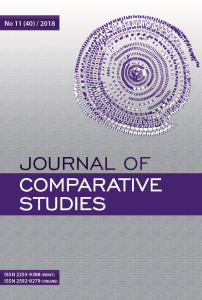Measuring Child and Youth Well-being for Enhancing Political Commitment and Decision-making Processes: the Case of Latvia
Keywords:
child and youth well-being, comparative longitudinal survey, H2020, policy network mapping, EuroCohortAbstract
European Cohort Development Project is striving for the improve-
ment of the quality of life for children and young people. To enhance
a long-term improvement of childrenís and young peopleís well-
being in European countries, it is necessary to carry out a longitudinal
research which would (1) help to understand transitions in young
peoplesí lives, i.e. the step from education to the labour market;
(2) enable researchers to identify patterns of change, i.e. the dynamics
and the factors associated with children and young people being
satisfied with their lives; (3) be used retrospectively to identify the
circum≠stances and experiences in earlier life that impact a given
outcome later; (4) be applied prospectively to make predictions about
the outcomes of particular circumstances and experiences in life
occurring at particular points in time. European Cohort Development
project proposes activities to advance the understanding of a wider
community and policy-makers about the nature and necessity of
longitudinal research. To succeed in organizing work with policy-
makers, different contemporary methods are employed. One of such
methods is Rapid Policy Network Mapping (Bainbridge et al., 2011),
which allows identifying the policy network the organizations are
involved in and define their roles. Policy network Mapping is a
lasting process which begins with determining the possible important
network of the respective field, it continues with interviewing
organization representatives involved in the network and drawing
the bounds of the network, as well as defining the roles of organiza-
tions involved in the network (Influencer, Owner / Decision Maker,
Influencer / Deliverer, Deliverer). When the main organizations
involved in the network are established, work with most important
policy makers begins.
In order to map policy networks and to develop a communica-
tion platform with which to influence decision makers in Latvia for
political and financial support for EuroCohort, the policy network
ìImproving the Quality of Educationî was chosen as the most important
and widespread in the country. At the same time, this network is
also the most problematic one because of permanent changes in
the education system at all levels of pre-school education institutions,
basic and secondary schools, higher education establishments. The
paper offered here describes the above mentioned policy network
mapping process and its specific features.

